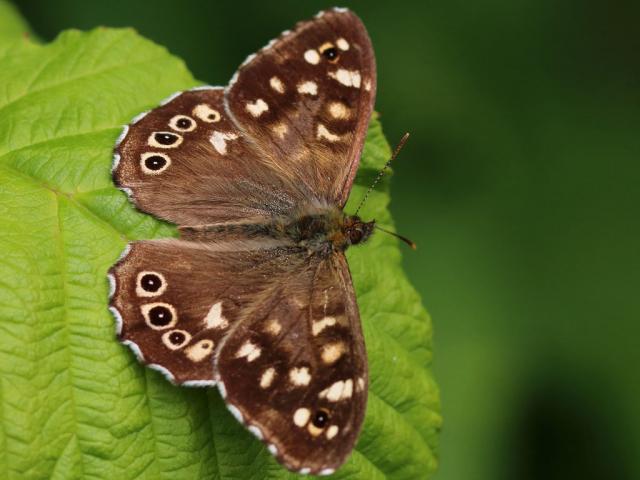Speckled Wood 2012-2016

The Speckled Wood has spread across much of Britain since the 1920s when it was restricted to the south-west of England, lowland Wales and western Scotland. Between 2012 and 2016 we carried out a postcard and online survey to help us map changes in its distribution. Our report is available as a pdf below.
Comma 2011
The adult butterfly is very distinctive, with its ragged wings and the bright white ‘comma’ mark on the underside. The fully-grown is also very distinctive; tan-coloured and spiny, with a splash of bright white on its back, closely resembling a bird dropping.
The caterpillars have been found feeding on a traditional old English variety of hop in a garden in Fallin, near Stirling, on elm on common nettle.
During 2011, the majority of records came from the east of the country, the most northerly from Banchory in Aberdeenshire. A single record from the Ardnamurchan peninsula suggests that occasional individuals can be quite mobile.
It seems that the Comma is now well-established in the Borders and the Central Belt, with an increasing presence further north into Perthshire, Angus and south Aberdeenshire. In the west, the Comma is spreading more slowly into the Clyde valley and the Trossachs.
Small Tortoiseshell 2009

Small Tortoiseshell butterflies overwinter as hibernating adults, emerging in the Spring to mate and lay eggs, again in batches on the young leaves of Common Nettle. The young larvae are similarly gregarious, and when fully grown, disperse to finish feeding and pupate, with new adults appearing from July onwards.
The butterfly has seen large declines in recent years in southern England, and concern has been growing that this was due to the spread of a parasite from the Continent.
Records received for Small Tortoiseshell during 2009 suggest that there is some contraction in range, particularly in the west of Scotland.
Peacock 2008

The Peacock over-winters as an adult and can be seen in gardens and other flowery places between March and June, and again in August and September. Its caterpillars feed on nettles.
In 2008 the public were asked to look out for the Peacock butterfly, which is colonising new parts of Scotland.
The report attached below as a pdf shows its distribution from the reported sightings submitted using postcards and on-line in 2008. The maps show a rapid recent spread into the Scottish Highlands.
Orange-tip 2007
The report below shows the change in distribution of this attractive butterfly from the results of the postcard surveys in 1997 and 2007. The Orange-tip has continued its spread north and west, possibly in response to global warming.
It is on the wing April-May, and the caterpillars feed on garlic mustard and cuckoo flower (also called ladies smock).
We are always happy to receive more records, so please send your sightings to Butterfly Conservation Scotland, Balallan House, Allan Park, Stirling, FK8 2QG. Thank you.
Many thanks to volunteers Heather Young, Richard Sutcliffe, Duncan Davidson, Tony Mainwood, David Barbour and Bertie Robinson for helping compile and map these records, and to Heather for compiling the reports. And special thanks to all of you who have submitted records!

